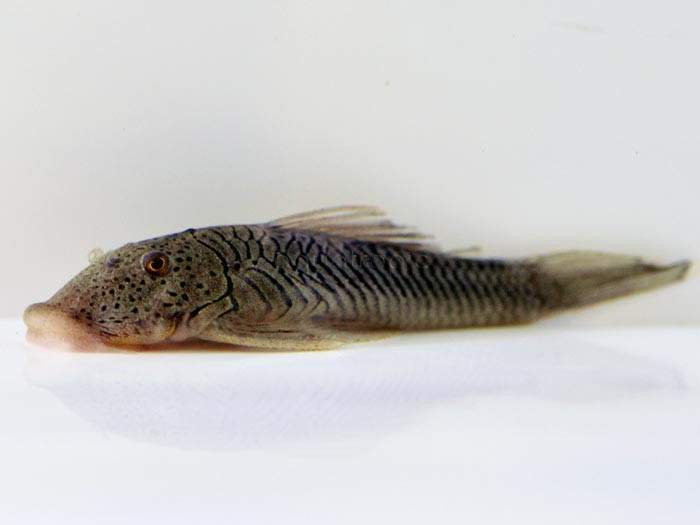The Rubbernose Pleco (Chaetostoma formosae)

For those aquarists in need of an industrious algae-eating fish for smaller aquariums, allow us to introduce the Rubbernose Pleco. This species grows to just a fraction of the size of the Common Pleco, with males reaching just four inches in length and females being closer to three. But, despite their small size, these can be a real workhorse for your fish tank, clearing off the algae so you don’t have to.
While this fish has been common for a while now in the aquarium trade, the Rubbernose Pleco continues to be misidentified, often as C. thompsoni, a rare species that has likely never been exported. You might also see it listed (incorrectly) as L146 or (correctly) as L187b, a naming convention from the Aqualog fish magazines. This fish was finally given a real scientific name when it was described in 2011 as C. formosae. While it may not be the most colorful of the armored catfishes, there’s no denying that it has a distinctive style all its own, with dark-edged scales that form an attractive series of diagonal lines, as well as a number of dark polka dots which adorn the head.
In the wild, you’ll find C. formosae in the swift headwater streams of the Orinoco River in Eastern Colombia. It’s sleek, hydrodynamic shape—described by one aquarium writer as like a “motorcycle rider clinging for dear life on their beloved bike as the world hurtles past on all sides”—is an adaptation for living in this turbulent habitat, and, as much as possible, this species will benefit from good water flow and well-oxygenated conditions in an aquarium. There is usually minimal plantlife growing in these streams, so this might not be the best fish to add to a lush and stagnant planted aquarium. Large, smooth stones placed directly in front of heavy water current will quickly become the favorite hangout of your Rubbernose Pleco. Also, room temperature water is preferable to a high-temperature tropical environment, as this will more closely replicate the natural water parameters.
In smaller tanks or those which grow little algae, there is a real risk of this fish not getting enough to eat, so be sure to always check for a fat, full belly on this fish. Aside from grazing on the aquarium décor, it is recommended to supplement the diet with sinking algae wafers and some occasional fresh greens (shelled peas, blanched spinach, cucumber, zucchini). Part of their diet in the wild is also made up of small invertebrates, so be sure to include some frozen bloodworms or other types of meaty foods on the menu.